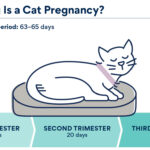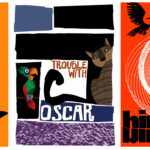It’s a classic image: a cat lapping up milk. And when it comes to cheese, it seems like a natural extension of that dairy desire. You’ve probably seen your feline friend’s eyes light up when you bring out the cheese board. But can cats actually eat cheese?
The short answer is yes, cats can eat cheese, but there are important considerations to keep in mind. While cheese isn’t toxic to cats and even offers some nutritional benefits in moderation, it’s not a snack that’s universally safe for all felines. Many cats are lactose intolerant, which can lead to digestive issues. Let’s dive into the details of safely sharing cheese with your kitty.
Is Cheese Really That Bad for Cats?
Cheese isn’t inherently bad for cats; in fact, when given in small amounts, it can be a nutritious treat. Cheese boasts a good source of protein and calcium, essential nutrients for feline health.
However, the main issue with cheese for cats lies in lactose intolerance, a common condition among adult felines. Many cats lose their ability to digest lactose, the sugar found in milk and dairy products, as they mature. Consuming lactose can cause gastrointestinal upset in these cats, manifesting as symptoms like:
- Vomiting: Their stomach rejects the indigestible lactose.
- Diarrhea: Lactose fermentation in the gut draws water into the intestines.
- Abdominal Pain: Gas and discomfort from undigested lactose.
- Gas: Increased fermentation leads to flatulence.
These unpleasant side effects can occur even after a cat eats a small amount of cheese or milk. For lactose-intolerant cats, it’s best to avoid dairy products altogether.
Another factor to consider is the calorie density of cheese. Cheese is surprisingly high in calories for its size. For a cat, a small cube of cheddar is calorically equivalent to a human eating a couple of cheeseburgers! Therefore, portion control is crucial. Cheese should be an occasional treat, given in very limited quantities – think dice-sized portions once or twice a week at most.
Navigating the Cheese Aisle: What’s Safe for Your Cat?
If your cat isn’t lactose intolerant and you want to offer a tiny cheese treat, some types are better choices than others. Opt for firm, plain cheeses without added flavors or ingredients. Good options include:
- Cheddar: A classic, firm choice, generally lower in lactose than softer cheeses.
- Swiss: Another firm cheese that is often well-tolerated.
- Parmesan: Hard and aged, Parmesan has a lower lactose content.
- Provolone: A semi-hard cheese that can be a suitable option in small amounts.
- Gouda: Similar to cheddar and Swiss in lactose levels.
- Goat Cheese: While technically lower in lactose, goat cheese is higher in fat and lower in vitamin D compared to some cow’s milk cheeses, so moderation is key.
On the other hand, softer cheeses generally have a higher lactose content and are more likely to cause digestive problems for sensitive cats. It’s best to steer clear of these:
- Cottage Cheese: High in lactose despite its seemingly mild nature.
- Cream Cheese: A very soft cheese with a significant lactose level.
- Mozzarella: Even in string cheese or on pizza, mozzarella is high in lactose.
- Brie and Camembert: Soft, creamy cheeses with higher lactose content.
- Blue Cheese: Besides lactose, blue cheeses can contain molds that might be harmful to cats.
- American Cheese: Highly processed and loaded with carbohydrates and additives, making it an unhealthy choice.
Why Cream Cheese, Cottage Cheese, and Mozzarella Are Problematic
Cream Cheese and Cottage Cheese are both soft cheeses, placing them firmly on the “limit or avoid” list. Their higher lactose content increases the risk of digestive upset, leading to vomiting and diarrhea in lactose-intolerant cats.
String Cheese, often made from mozzarella, also falls into the less desirable category. Mozzarella, whether in string cheese form or melted on pizza, carries a higher lactose load that can trigger digestive issues in sensitive cats. While provolone, sometimes mixed in string cheese, is better tolerated, it’s still wise to be cautious. A tiny nibble might be acceptable for some cats, but it’s generally best to avoid offering string cheese.
Cheesecake and Cheez-Its: Definite No-Nos
Cheesecake is absolutely off-limits for cats. It combines soft cheeses like cream cheese or ricotta with other ingredients that are unhealthy or even toxic to cats, such as high amounts of sugar and potentially chocolate.
Cheez-Its and similar cheese crackers are also unsuitable for feline consumption. These processed snacks are packed with unhealthy additives, excessive calories, fats, and carbohydrates. They offer no nutritional value for cats and should be avoided entirely.
My Cat Sneaked a Bite of Cheese! What Now?
If your cat has managed to snatch a piece of cheese, don’t panic immediately. If your cat is generally healthy and only consumed a small amount, they will likely be fine. Simply monitor your cat for any signs of digestive upset over the next 24 hours. Most cats will recover quickly from a small cheese indulgence with perhaps mild gastrointestinal discomfort.
However, if you notice any of these symptoms after your cat eats cheese, contact your veterinarian:
- Loss of appetite
- Lethargy or decreased energy
- Vomiting
- Diarrhea
For cats with pre-existing health conditions, it’s always prudent to contact your vet even if symptoms haven’t appeared yet. This is especially important for cats with:
- Known dairy allergies or lactose intolerance
- Sensitive stomachs or a history of gastrointestinal issues
- Kidney problems (due to cheese’s salt content)
- Obesity (due to cheese’s high calorie content)
Safe Cheese Serving Suggestions for Cats
If you’re confident your cat isn’t lactose intolerant or allergic to dairy and you want to offer cheese as a very occasional treat, stick to hard cheeses like cheddar or Swiss. Cut a tiny, dice-sized cube and break it into even smaller pieces to prevent gulping and potential choking.
Remember, moderation is key. Cheese should only be a rare treat, offered no more than once or twice a week in very small portions.
After giving your cat cheese, observe them closely for a few days to ensure they don’t develop any signs of vomiting or diarrhea.
By being mindful of the type and quantity of cheese, you can make informed decisions about whether to share this human snack with your feline companion, always prioritizing their health and well-being.
WRITTEN BY: Sandra C. Mitchell, DVM, DABVP


